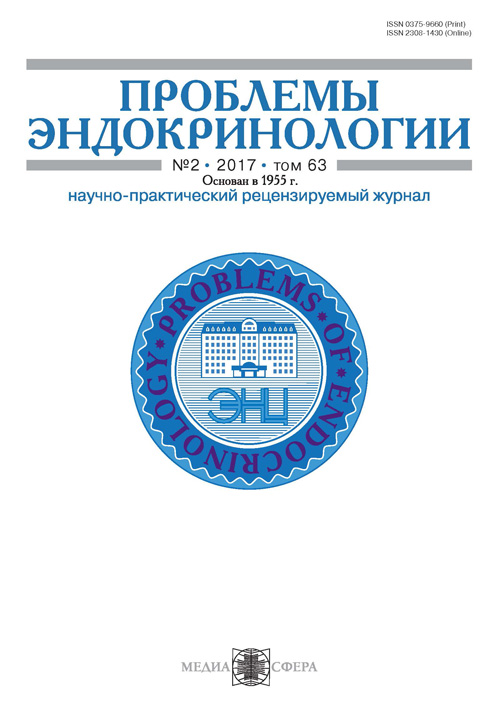Early pregnancy loss as an indication for preimplantation genetic testing
- Authors: Smirnova A.A.1,2, Zyryaeva N.A.1, Zhordanidze D.O.1, Anshina M.B.1, Kira E.F.1,2
-
Affiliations:
- Center for Reproduction and Genetics Ltd.
- National Medical and Surgical Center named after N.I. Pirogov
- Issue: Vol 68, No 5 (2019)
- Pages: 75-82
- Section: Original study articles
- URL: https://journals.rcsi.science/jowd/article/view/15201
- DOI: https://doi.org/10.17816/JOWD68575-82
- ID: 15201
Cite item
Abstract
Hypothesis/aims of study. Approximately 10–15% of clinical pregnancies end in spontaneous abortions. The main cause of early miscarriages is chromosomal aberrations of the embryos. Chromosomal abnormalities are detected in 70% of sporadic miscarriages and in 30–50 % of recurrent miscarriage. Modern assisted reproductive technologies allow not only to treat infertility, but also to provide access to embryos, which makes it possible to test them for hereditary diseases and chromosomal abnormalities before implantation. This study aimed to assess the efficacy of preimplantation genetic testing (PGT) in patients with infertility and early pregnancy loss.
Study design, materials and methods. IVF outcomes were studied retrospectively in 84 patients under the age of 39 years. The first group consisted of 22 women with a normal karyotype, who underwent 34 IVF cycles with PGT for aneuploidies and 22 transfers of euploid embryos. The second group comprised 48 women with a normal karyotype, who underwent IVF treatment without PGT. In this group, we preformed 45 frozen and 18 fresh embryo transfers. The third group included 14 couples with chromosomal structural rearrangements, who underwent 22 IVF cycles with PGT for chromosomal structural rearrangements.
Results. The cumulative pregnancy rate and the birth rate did not significantly differ between the study groups. The early miscarriage rate and the multiple pregnancy rate were significantly lower in groups with PGT compared to the group without PGT. The aneuploidy rate was significantly higher in women with two or more pregnancy losses in history compared to patients with only one pregnancy loss.
Conclusion. The data obtained allow recommending IVF with PGT to women with recurrent pregnancy loss in order to avoid subsequent miscarriage.
Full Text
##article.viewOnOriginalSite##About the authors
Anna A. Smirnova
Center for Reproduction and Genetics Ltd.; National Medical and Surgical Center named after N.I. Pirogov
Author for correspondence.
Email: a-smirnova@mail.ru
ORCID iD: 0000-0003-3035-5921
Scopus Author ID: 56586609300
MD, PhD, head of IVF department, assistant professor in Department of women’s diseases and reproductive health
Russian Federation, MoscowNatalya A. Zyryaeva
Center for Reproduction and Genetics Ltd.
Email: natalia_zy@mail.ru
MD, PhD
Russian Federation, MoscowDiana O. Zhordanidze
Center for Reproduction and Genetics Ltd.
Email: diana_kiknadze@mail.ru
MD, PhD
Russian Federation, MoscowMargarita B. Anshina
Center for Reproduction and Genetics Ltd.
Email: docansh@gmail.com
ORCID iD: 0000-0002-8446-5387
Scopus Author ID: 6602411324
MD, PhD, General Director
Russian Federation, MoscowEvgeny F. Kira
Center for Reproduction and Genetics Ltd.; National Medical and Surgical Center named after N.I. Pirogov
Email: profkira33@gmail.com
ORCID iD: 0000-0002-1376-7361
Scopus Author ID: 57191917600
MD, PhD, DSci (Medicine), Professor; the Head of the Department of Women’s Diseases and Reproductive Health, the Institute of Advanced Medical Training
Russian Federation, MoscowReferences
- Корсак В.С., Смирнова А.А., Шурыгина О.В. ВРТ в России. Отчет за 2016 г. // Проблемы репродукции. – 2018. – Т. 24. – № 6. – С. 8–21. [Korsak VS, Smirnova AA, Shurigina OV. Russian ART Register. Modern reproductive technologies. 2018;24(6):8-21. (In Russ.)]. https://doi.org/10.17116/repro2018240618.
- Centers for Disease Control and Prevention, American Society for Reproductive Medicine, Society for Assisted Reproductive Technology. 2016 Assisted Reproductive Technology National Summary Report. Atlanta (GA): US Dept of Health and Human Services; 2018 [cited 2018, October]. Available from: https://www.cdc.gov/art/pdf/2016-report/ART-2016-National-Summary-Report.pdf.
- Письмо Министерства здравоохранения РФ от 15 февраля 2019 г. № 15-4/И/2-1217 «О направлении клинических рекомендаций (протокола лечения) „Вспомогательные репродуктивные технологии и искусственная инсеминация“». [Letter from The Ministry of Health No. 15-4/И/2-1217 “O napravlenii klinicheskih rekomendacii (protokola lecheniia) ʽVspomogatel’nye reproduktivnye tehnologii i iskusstvennaia inseminaciiaʼˮ, dated 2019 February 15. (In Russ.)]. Доступно по: https://www.garant.ru/products/ipo/prime/doc/72113052/. Ссылка активна на 26.07.2019.
- Tur-Torres MH, Garrido-Gimenez C, Alijotas-Reig J. Genetics of recurrent miscarriage and fetal loss. Best Pract Res Clin Obstet Gynaecol. 2017;42:11-25. https://doi.org/10.1016/j.bpobgyn.2017.03.007.
- Wu T, Yin B, Zhu Y, et al. Molecular cytogenetic analysis of early spontaneous abortions conceived from varying assisted reproductive technology procedures. Mol Cytogenet. 2016;9:79. https://doi.org/10.1186/s13039-016-0284-2.
- Marquard K, Westphal LM, Milki AA, Lathi RB. Etiology of recurrent pregnancy loss in women over the age of 35 years. Fertil Steril. 2010;94(4):1473-1437. https://doi.org/10.1016/j.fertnstert.2009.06.041.
- Hourvitz A, Lerner-Geva L, Elizur SE, et al. Role of embryo quality in predicting early pregnancy loss following assisted reproductive technology. Reprod Biomed Online. 2006;13(4):504-509. https://doi.org/10.1016/s1472-6483(10)60637-2.
- Wang ET, Kathiresan AS, Bresee C, et al. Abnormal implantation after fresh and frozen in vitro fertilization cycles. Fertil Steril. 2017;107(5):1153-1158. https://doi.org/10.1016/ j.fertnstert.2017.03.012.
- Hu L, Du J, Lv H, et al. Influencing factors of pregnancy loss and survival probability of clinical pregnancies conceived through assisted reproductive technology. Reprod Biol Endocrinol. 2018;16(1):74. https://doi.org/10.1186/s12958-018-0390-6.
- Murugappan G, Shahine LK, Perfetto CO, et al. Intent to treat analysis of in vitro fertilization and preimplantation genetic screening versus expectant management in patients with recurrent pregnancy loss. Hum Reprod. 2016;31(8):1668-1674. https://doi.org/10.1093/humrep/dew135.
- Shahine LK, Marshall L, Lamb JD, et al. Higher rates of aneuploidy in blastocysts and higher risk of no embryo transfer in recurrent pregnancy loss patients with diminished ovarian reserve undergoing in vitro fertilization. Fertil Steril. 2016;106(5):1124-1128. https://doi.org/10.1016/j.fertnstert.2016.06.016.
- Kort JD, McCoy RC, Demko Z, Lathi RB. Are blastocyst aneuploidy rates different between fertile and infertile populations? J Assist Reprod Genet. 2018;35(3):403-408. https://doi.org/10.1007/s10815-017-1060-x.
Supplementary files







